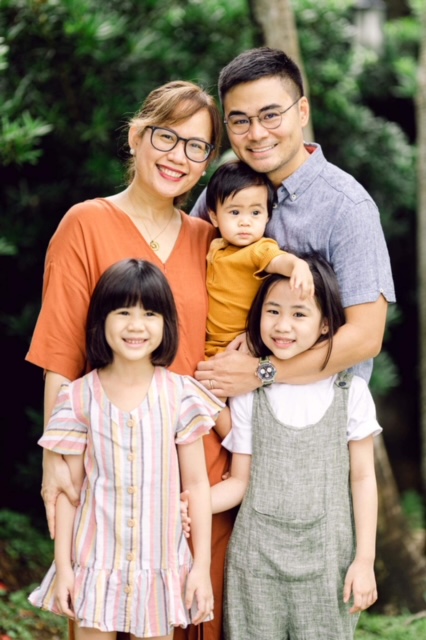I’m featuring one of the most asked questions that I get from parents.
Q: Hi Teacher Tanya! I’ve seen how some of your parents in your classes post on how they manage to successfully let their child stay in the car seat. Can you please share some tips with me? We are traveling abroad soon and I’m worried about this because our toddler doesn’t use our carseat (even if we have one), he’s just not used to it. HELP! – Mommy Melissa,
A: Hi Mommy Melissa!!
Thank you for sending your question. You are not alone in this challenge. I, myself, had the same struggle when I had to train not just one child, but both my children, to use the car seat. It was one of the hardest and I felt the longest process I experienced with my children but one of the best decisions my husband and I made.
I always tell parents, there’s this sense of “FREEDOM” when you get your child onboard with you using a carseat. I didn’t have to be dependent on anyone as I used to be. Before we used the car seat, I had to literally depend on someone to be with me when I needed to take my children out because no one will hold them while I drive. A lot of errands that I think I can accomplish with my children were put aside because I can’t be alone with them in the car. We had a car seat but we never truly maximised it. When we first had Ellie, right from infancy to 6 months, we didn’t have problems placing her on the car seat. It was when she became mobile (7 months), when she would immediately whine or cry whenever we would attempt to put her on the car seat. It was so much easier to lift her off the car seat, have someone carry her instead of having a baby crying all throughout the trip. I felt guilty that I was putting my child into such situation. I would always say, “kawawa naman na umiiyak si Ellie”. And so, we put our car seat in our storage room.
When I had Julia, my youngest, it was during this time when I started to read on RIE® , and studied more about it and started to work towards my certification as RIE facilitator. It was there that I realised that I’m not putting safety as a priority to my children’s well-being when it comes to traveling with them. More importantly, The RIE® approach taught me that every baby needs to learn how to stimulate himself, how to self-soothe, how to entertain himself. In addition to this, I need to accept that I am not a bad parent when I’m letting my child experience emotions other than happiness and that my role as a parent is to also set the expectations and limits especially when safety is of concern.

Julia at 4 months old. The earlier you start training your baby in the car seat, the better
In my parent-infant and toddler classes, one of the challenges I pose to the parents is to train their child to use the car seat. I always look forward about their stories. You can check their tips online (via my IG: teachertanyavelasco)
I came up with a few tips to help you get started with your car seat training as inspired by the RIE principles:
- Demonstrate Respect.
Respect your child in every aspect of your car seat training. How do you do that? Let your child know that you are going to use the car seat whenever you would ride the car. For example, “Starting today, we will start to use the car seat whenever we would ride the car because Mama wants you to be safe.” Tell your child what are you doing as you are placing him on the car seat, step by step. “Look, I’m placing you in the car seat now. I’m putting this long belt so that you won’t fall forward when Mama steps on the break. See, I’m inserting it and locking it.” It is important that we inform the child what we are going to do before actually doing it.
If you have a toddler, try giving him a simple choice by asking; “Do you want to climb up the car yourself or do you want me to put you on the car seat?” Giving them that choice empowers them.
When you let your child know what is about to happen (in this case, helping them on the car seat), tt prepares them ahead of time. It sends a message of respect. What would you feel if you were abruptly carried and put on the carseat?
2. Consistency is KEY
When you start training your child to use the car seat, be consistent. Don’t train him just for today and then wait for 2 more days before you try again. Consistency and Routine is everything for young children. In the RIE Approach, when a child is aware of what will happen within the day, it makes the child feel secured because he knows what’s to be expected. Cooperation on the part of the child follows. Make it as a part of your routine. Choose a time in your day when you will do the same process. Do it for the next 7 days. And keep doing it for another 7 days.
3. Start with Baby Steps.
Don’t drive to Tagaytay right away when you are on Day 1. Make small steps. Try driving to the end of the street first. Some parents would let their baby stay in their carseat for 5 minutes first. Slowly, increase the distance as the days progress.
4. Don’t GIVE UP right away
When your baby or toddler starts to whine or cry once you strap him in the carseat, don’t give up. Don’t feel guilty that you are leaving him there alone while you are not doing anything about it. Don’t rush right away and carry him, give it sometime first. Your child is figuring how he feels in this new set-up that he’s not accustomed to. Your child is observing how you will react, too. When you rush right away, he would realize that a simple whine or cry would make my mom or dad carry me and so I will just cry instead. Magda Gerber, the proponent of RIE would say, “Observe More”. Observe your child while you are training him, what keeps him focused, what pacifies him, what makes his face smile as you drive,etc. The more you observe, the more you would realize that your child can self-soothe himself. Keep in mind your greater objective as to why you are doing this. I always remind myself that I want to keep my children safe so I will strive to do my best to train them.
5. Communicate using short and simple words
Although your baby or toddler can’t speak yet, keep in mind that he/she can understand your words. It helps if you are able to express in short and simple words what your expectations are and what’s going to happen. You can say, “It’s time to ride the car now. It’s not time to play.” or “after we ride the car, you can play when we get home.” Be direct and very clear and confident too despite all the crying and complaining. Your child can sense your tentativeness and once they can sense that, it will be difficult to have them onboard with you. Acknowledge your child’s emotion by saying ” I know you feel sad because you don’t want to ride on your car seat but I need you to be there now.”
Just a reminder, please refrain from giving your child any gadgets while you are training them, doing so would just serve as a distraction for them. Isn’t it a wonderful experience to look outside and admire what they can see rather than looking at the screen? And last tip, have everyone onboard in your household. Get support from your spouse, kasambahays and relatives because again, consistency is key in this.

The best conversations I’ve had with my children are the ones we had in the car. They have no choice but to communicate with me while I drive. 🙂
If I would do it all over again, I would have started earlier, right when they were just infants and consistently kept the same routine. My husband and I realised later on when both our children were toddlers already, so imagine the bigger challenge when we were training them. But I’m glad we supported each other, and continued on. Now, I’m enjoying the freedom of traveling with them alone or sitting at the passenger seat while my husband drives while our children are relaxing at the back of the car.
A lot of my parents in class successfully trained their baby to use the car seat. So I believe that you too can also be successful in this. Again, don’t give up. We all went through this challenge. You can do it! I can’t wait to hear your story.

Traveling with 2 children can be challenging. Having trained them to be on the car seat has helped our family a lot!
FYI: According to the World Health Organization, the system can reduce risk of injury by up to 80% for children aged 0-4 in a rear-facing restraint. In the Philippines, an average of more than 600 children died from road crash incidents from 2006 to 2015.
Source: https://www.rappler.com/move-ph/issues/road-safety/182632-require-child-safety-seats-house-bill
PS. If you are looking for a car seat and don’t have an idea, you can visit Ogalala Store (Ayala 30th and Shangrila Mall) and check out the car seats (such as Maxi Cosi) there. According to their website (www.maxi-cosi.com), Maxi-Cosi received a 4 star safety rating, the highest safety rating achieved in this test for car seats that can be used forward and rearward-facing. It is also known for the air protect® revolutionary side impact protection for your child.
You can also avail of my CODE ( FollowTTanya) to get 20% off any item. You can also check oga-lala.com to know more about the products.


Comments are closed here.